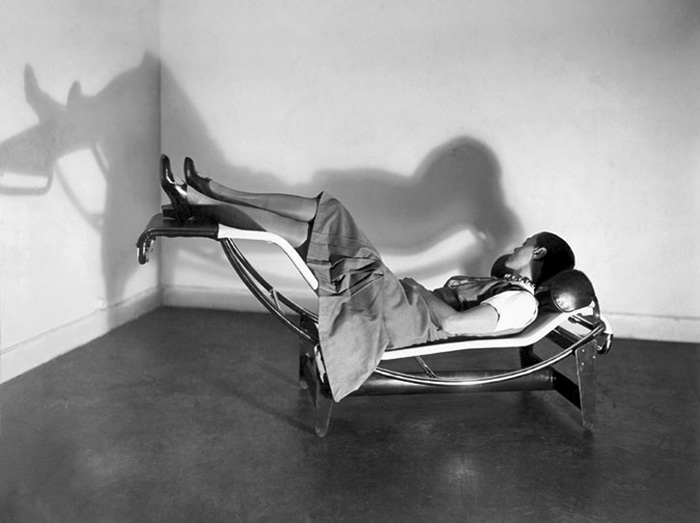
Designed by Le Corbusier, Pierre Jeanneret and Charlotte Perriand in 1928, Le Corbusier, LC4 became one of the collaborators’ signature pieces. Available in a large selection of leather and hides, it’s the adjustable ability of the chair that made it one of the most copied furniture pieces in history.
Charlotte Perriand in the LC4 chair, demonstrating different sitting and lounging positions.
Image courtesy of: All Roads Lead to Home
Charlotte Perriand was a French designer and architect whose intent was for her work to create functional living spaces in the belief that better design would ultimately lead to a better society. Quickly after graduating from college, Perriand became enamored with La Corbusier, the renowned Swiss designer and architect who would become known as the one of the original pioneers of modern architecture. When she showed up at his studio asking for a job, La Corbusier’s response was, “We don’t embroider cushions here”. Undeterred, Perriand set out to impress him by creating a stunning and completely original glass, aluminum, and steel rooftop bar for that year’s Salon d’Automne in Paris. Impress him she did!
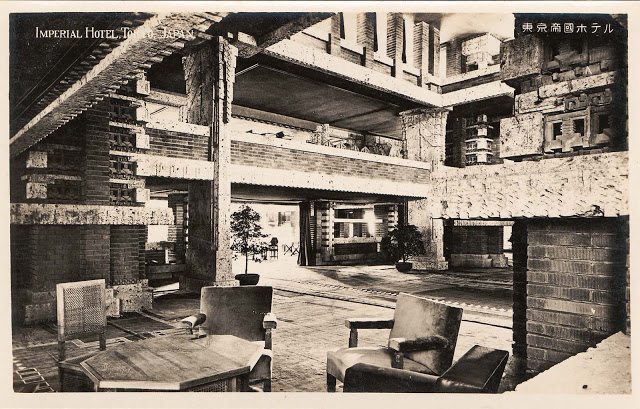
An advertisement for the Imperial Hotel in Tokyo, designed by Frank Lloyd Wright.
Image courtesy of: Museum of Fine Arts, Boston
Curious about Asia, Perriand visited Kyoto, spending time at the Frank Lloyd Wright Imperial Villa in 1940. She went on to spend substantial time with Sori Yanagi, the Japanese designer who became very instrumental in advancing Japan’s modern design field developed after World War II.
Perriand drew upon Japanese influences for the remainder of her career. Even though her visit to Japan was initially because of an invitation from the Japanese Ministry of Commerce and Industry/Department of Trade Promotion to serve as an advisor to help increase furniture exports for Japan, her love of “all things Japan” added to her beautiful, modern style.
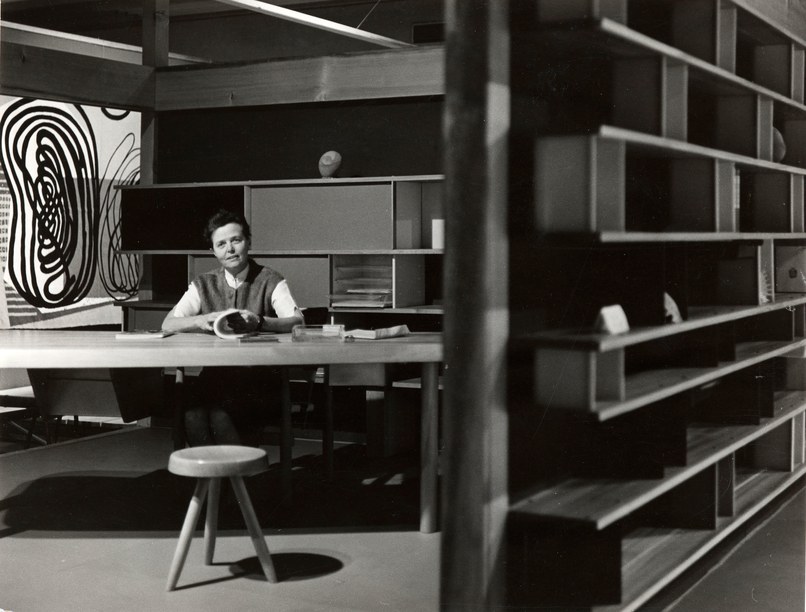
Charlotte Perriand at the Expo Synthèse des Arts Tokyo, 1955.
Image courtesy of: Architectural Digest
Shelves became an a fascination for Perriand after her visit to Japan in 1940; but shelves became an obsession after her second visit to Japan in 1953. Perriand said of the shelves, “[They were] arranged on the walls, in the form of a cloud. A free form that gives rhythm to space and enhances the objects it supports.”
A decade later, Perriand unveiled her Nudge collection. The collection was named after the French word for “cloud” which is what her bookshelves resemble. This modular bookshelf could be arranged in various configurations because of the sliding panels, trays and shelves. The first renditions were made solely out of wood because that was the only material available due to the war rations. However by the time the series officially debuted in 1956, the shelves could be made in aluminum also.
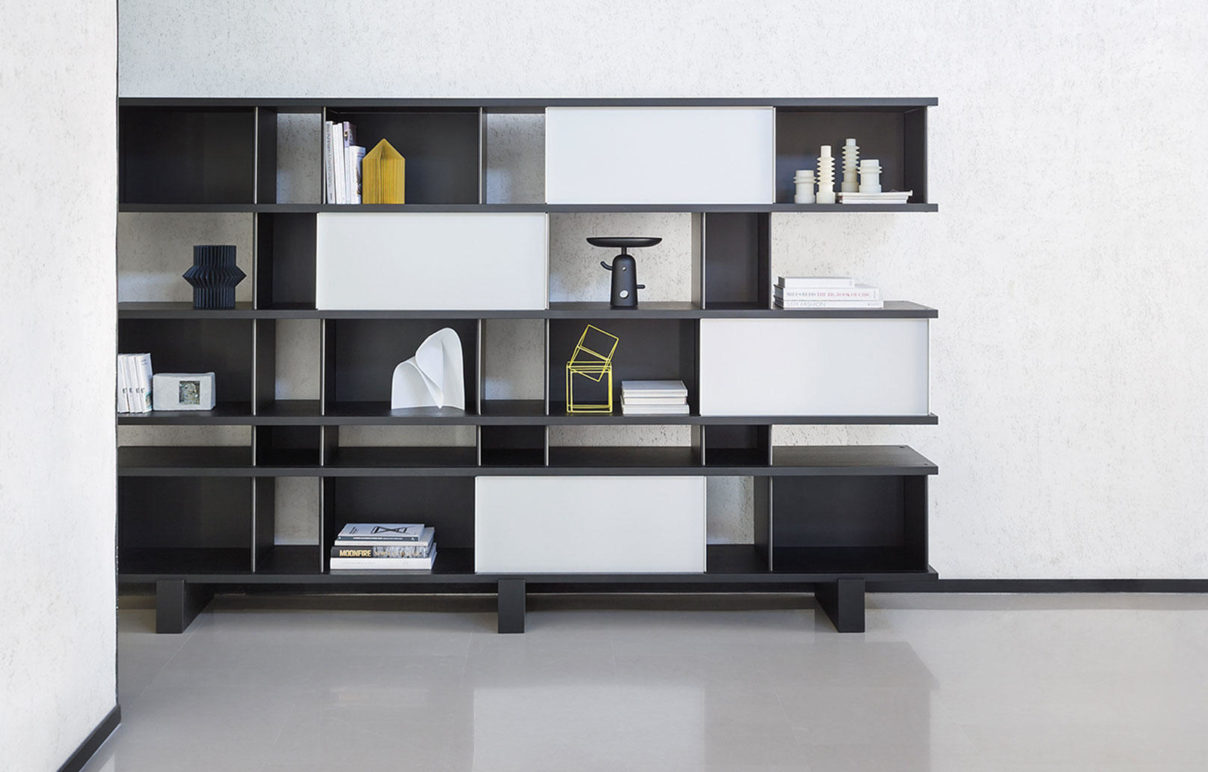
Image courtesy of: Cassina
It was the legendary Parisian gallery, Galerie Steph Simon, that first edited models from Perriand’s Nudge project. These important displayed helped Galerie Steph Simon become known as the gallery that (with help from Perriand) gave rise to the birth of modern design.
It is now Cassina, in close collaboration with Perrette Perriand-Barsac, Charlotte’s Perriand’s daughter and sole heir, who produces the unique pieces, including the cupboards and bookshelves, with the aim of authentic reconstruction. It’s the concept of free modularity taken to the nth degree… asymmetrically arranged shelves leaning against the wall, leaving empty spaces for paintings or sculptures.
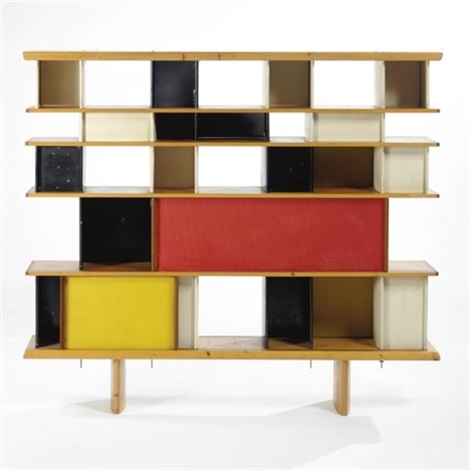
Image courtesy of: Matière 555
In terms of accessorizing, the basic shelves are made from wooden oak and the vertical elements come in aluminum which is either oxidized or painted black. There are five different heights to choose from, depending on how someone likes to organize books and objects. Each piece can be accessorized with aluminum trays and black, red and yellow plastic sliding trays which are removable.The sliding panels of the bookshelves can be designed in either oxidized aluminum, or in red, green grey, blue, yellow, white or black.